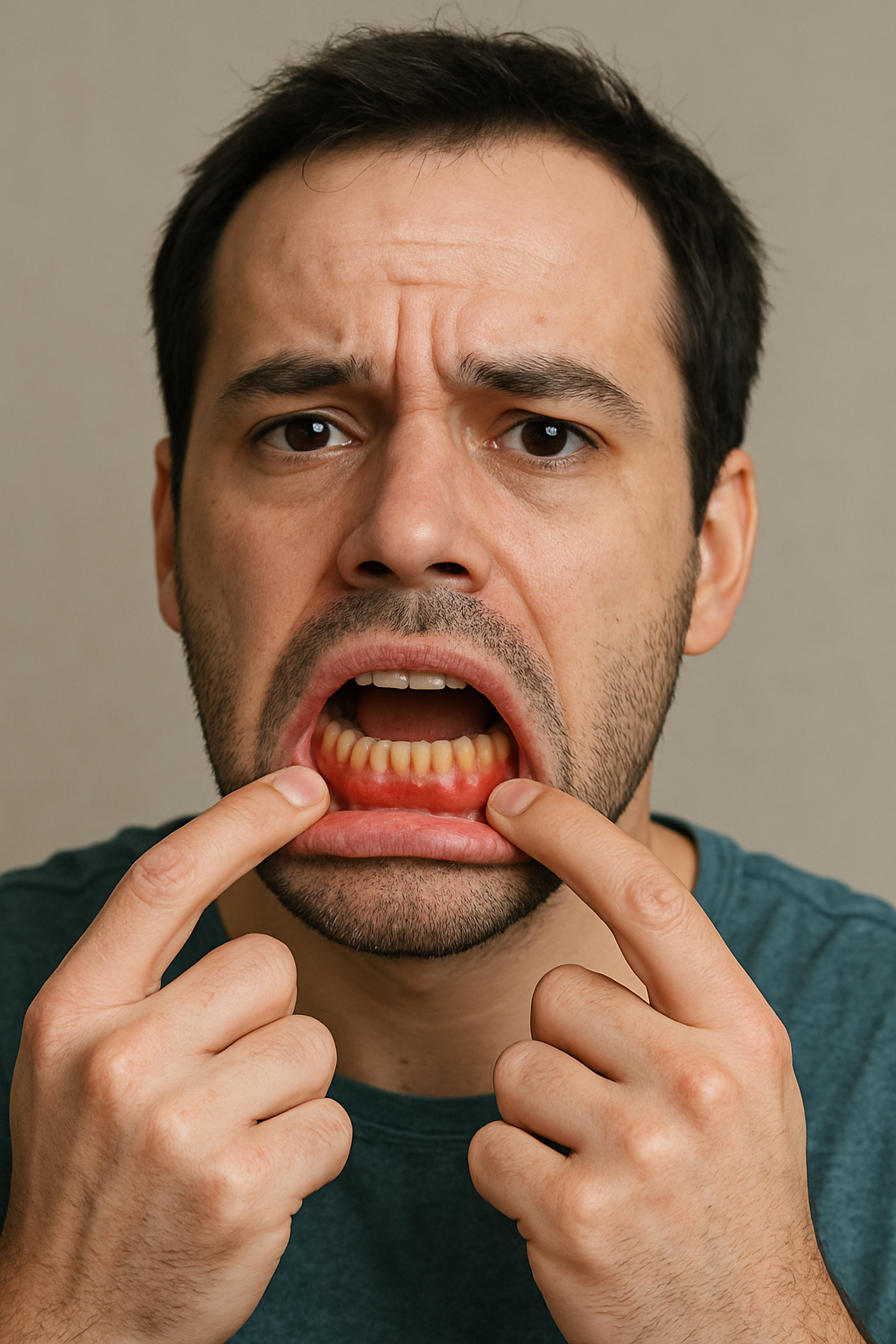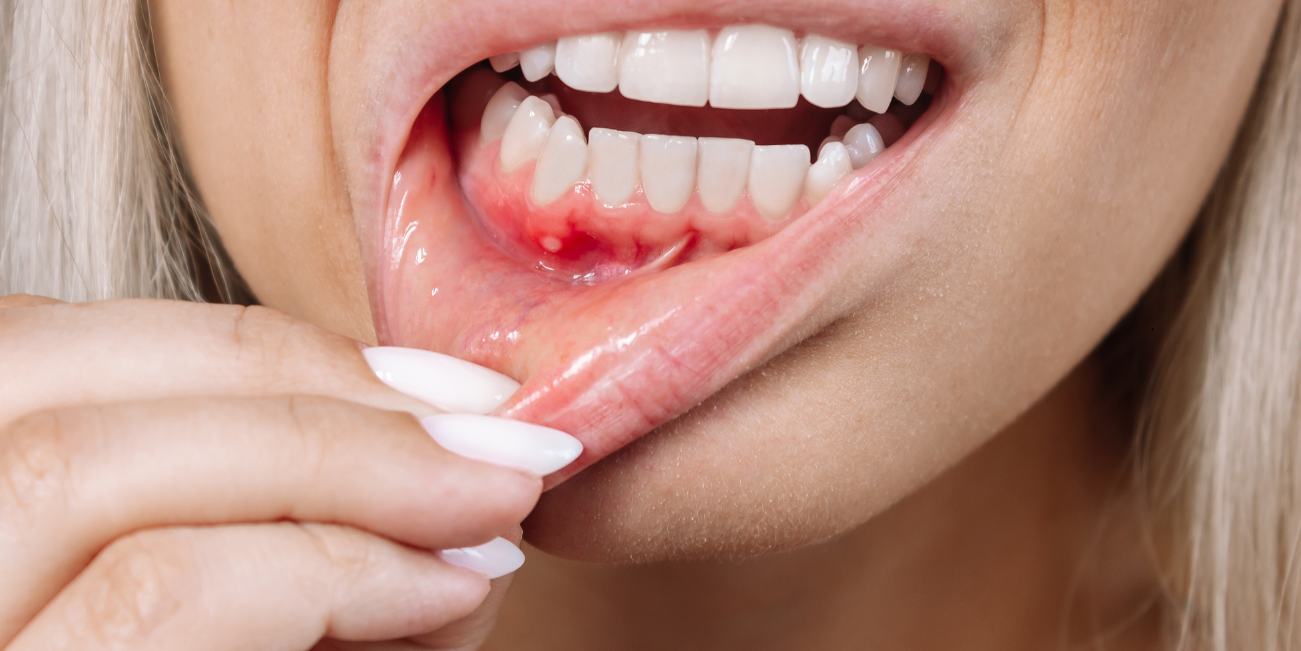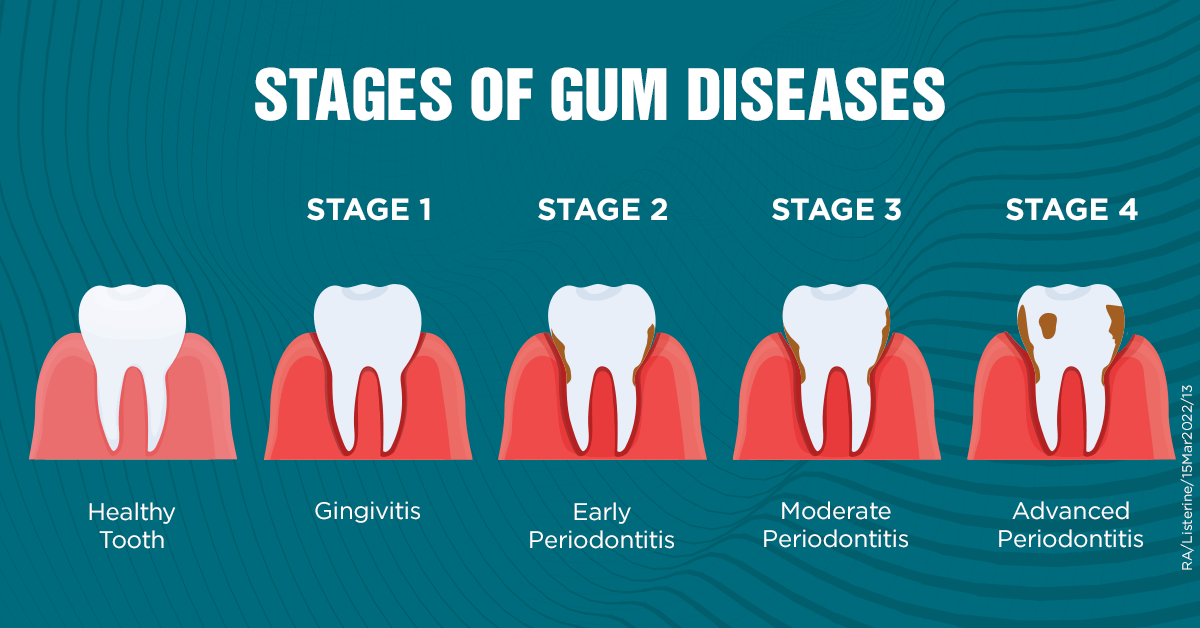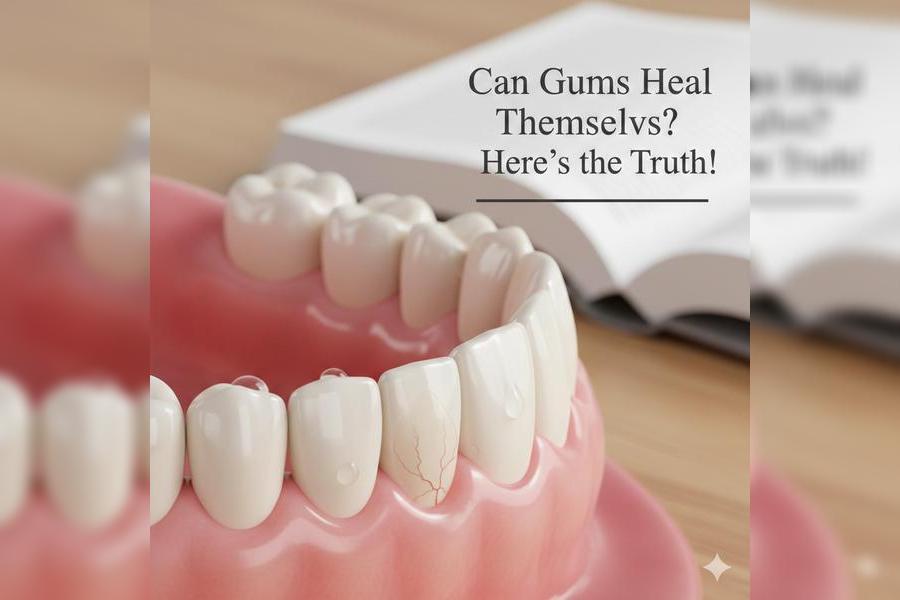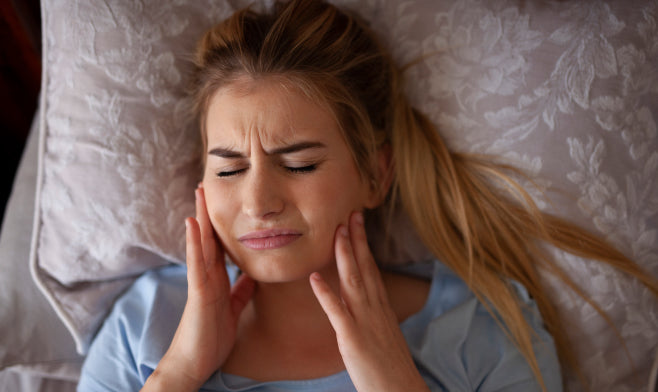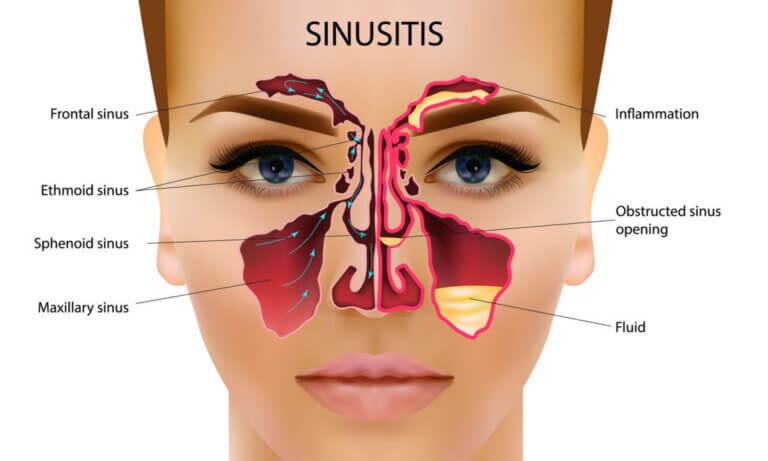There is no better way to kill your morning mood than to look in the mirror and notice your gums turning yellow. Not the pink, fresh, healthy you have in toothpaste advertisements. More like a boring, yellow color which causes you to pause half-way through the brush and ponder, “Wait, how did my gums ever get like that?
And that question: Why are my gums yellowish - can spiral into a dozen others. Is it something you ate? Are you brushing wrong? Is it a sign of gum disease, or worse, something going on with your health overall?
Here’s the deal: gums are like a built-in warning system. They often show signs of trouble before the rest of your body does. A yellow tint might be nothing major, but it could also be your mouth waving a tiny red (or, in this case, yellow) flag saying, “Hey, pay attention to me.”
That’s exactly what we’re going to unpack here. We’ll break down the possible causes - from simple plaque buildup to bigger health concerns - answer the questions people usually Google in a panic, and talk about what you can actually do (both naturally at home and with professional help).
What Does Yellowish Gums Indicate?
Addressing the most common question: Why take heed towards yellow gums?
-
Yellowing: A shift toward yellow, perhaps appearing as a coating, staining, or diffuse tint rather than sharp white patches. Could be mild (just a tint) or more pronounced.
-
Associated symptoms: Yellow gums seldom happen alone. More often, there’s plaque/tartar buildup, bad breath, bleeding when brushing or flossing, swelling, pain, gum recession, or sensitivity.
So if you’re wondering “why are my gums yellowish” - the “why” spans hygiene, habits, systemic health, and sometimes more urgent problems.
Quick Answers to Common Questions About Gums Turning Yellow
Here are some frequent questions people ask when they see yellow gums - with answers. These can pop up in your mind at random, so good to have them scattered in.
|
Question |
Answer |
|
Why are my gums turning yellow? |
Often because of plaque and tartar (hardened plaque) building up along the gum line, causing discoloration. Also early gingivitis is a common cause. |
|
Can yellow gums be a sign of a serious disease? |
Yes, yellow gums sometimes signal nutritional deficiencies, liver issues, abscesses, or even oral cancer in rare cases. If accompanied by pain, swelling, spots, or ulcers, get checked. |
|
How do I treat yellow gums at home? |
Enhance oral health: brush teeth twice a day, floss, use antibacterial mouth rinse, clean teeth professionally; change diet; avoid tobacco and staining substances. Certain natural medications (such as the use of neem, oils) may be used alongside. |
|
Will yellow gums go away on their own? |
Yes - in good care, in case of plaque or early gingivitis. Not entirely without treatment in the event of systemic problems or long term damage. |
10 Causes Why Gums Turn Yellow

Here are 10 possible causes of yellow gums - some common, some less so. Knowing them helps you pinpoint which may apply to you.
-
Plaque and Tartar Buildup
Sticky bacterial film (plaque) accumulates on teeth and gums. If not removed daily, it mineralizes into tartar (calculus), which is yellowish and hard. This physical deposit can stain gums or cause them to look yellow.
-
Early Gingivitis (Gum Inflammation)
Inflammation of gums due to bacteria. They may change from pink to slightly yellow or yellowish tint initially, along with swelling, bleeding, tenderness.
-
Poor Oral Hygiene / Neglect
Skipping flossing, brushing ineffectively or irregularly allows plaque to build up, and then the gum line becomes stained or weak. Combined with diets high in sugars/starches, it multiplies.
-
Diet / Staining Agents
Foods, drinks (coffee, tea, curry, colored spices), tobacco, betel nut chewing etc., can deposit pigments. These may settle on plaque or even affect the gum margins.
-
Smoking or Tobacco Use
The use of tobacco frequently results in stained teeth and yellow gum deposits. Smoking also lowers saliva, decreases the immune activity of gums and enhances the susceptibility of gums to plaque.
-
Nutritional Deficiencies
Deficiency of iron, vitamin B and other nutrients may also influence the gum color - making them pale or yellowish.
-
Anemia
Lightening of gum color can be a result of anemia (particularly iron deficiency). At times gums appear pale or yellow rather than pink and healthy.
-
Abscess or Infection
Abscesses or infection of a tooth can cause local yellow or whitish pustules, fistulas or draining points along the gums. These appear as spots instead of gum yellowing as a whole.
-
Liver or Systemic Problems -
Sometimes jaundice (liver dysfunction) leads to increased bilirubin, which may deposit in tissues and cause yellow coloration in mucous areas including gums. Though less common, systemic disease shows up in oral tissues.
10. Medication, Chemical Exposure, or Hormonal Changes
Some medications, mouth-rinses, or chemicals can stain or alter gum tissue. Hormonal fluctuations (pregnancy, puberty) may affect gum tissues making them more susceptible to discoloration or yellow tinting. Also, changes in blood flow may affect color.
Comparison of Causes, Associated Signs, and Implications
Here’s a table to help visualize which causes tend to show what signs, how serious they are, and what to do.
|
Cause |
Key Signs / Symptoms |
How Serious (Low-Medium-High) |
What You Can Do |
|
Plaque / Tartar |
Yellow buildup along gum line, rough texture, bad breath, mild inflammation |
Medium |
Brush/floss; dental cleaning; tartar removal by dentist |
|
Gingivitis |
Swollen gums, bleeding, yellow tint, tenderness |
Medium |
Better hygiene; anti-bacterial rinse; regular cleaning |
|
Poor hygiene / diet |
Persistent yellow/tinted gum, maybe general yellowing of teeth |
Medium |
Change brushing/flossing; reduce sugars/staining food; professional cleaning |
|
Tobacco / smoking |
Smoking stains; yellow/brown around gum margins; delayed healing |
High |
Quit or reduce use; oral hygiene; regular checkups |
|
Nutritional deficiencies / anemia |
Pale yellow gums, fatigue, maybe bleeding; concurrent body symptoms |
High |
Nutritional supplements; diet improvement; medical check |
|
Abscess / infection |
Localized yellow spot, swelling, pain, pus, sometimes fever |
High |
See dentist immediately; antibiotics; drainage if needed |
|
Systemic disease (e.g. liver) |
Yellowing elsewhere (eyes, skin), bad breath, fatigue, other symptoms |
High |
Medical evaluation; treat underlying disease |
|
Medications / chemicals |
Timing corresponds to drug use; patches or general tint; possibly sensitivity |
Medium |
Consult doctor/dentist; alternative meds; avoid irritating agents |
|
Hormonal changes |
Pregnancy, puberty; gums more sensitive; slight color changes |
Low-Medium |
Extra care during sensitive periods; professional advice |
|
Poor immune response / illness |
Persistent yellowing, slower healing, recurrent infections |
High |
Medical/dental workup; improve immune function |
Deeper Dive - Common Medical & Dental Conditions
This section looks at specific conditions/diseases that often show up when you ask “why are my gums yellowish”, especially if simple hygiene isn’t fixing it.
Gingivitis And Periodontitis
-
Gingivitis is early gum disease caused by plaque. The yellowish tint usually appears before red swelling and bleeding become pronounced. If caught early, it’s reversible.
- Periodontitis is more advanced. With plaque and tartar getting under gums, causing pockets, bone loss. Gums may change color (yellow to red to purple), retract, bleed, hurt. More serious consequences.
Abscesses, Ulcers and Localized Infections
-
A localized yellow spot / puss pocket / cyst (sometimes called a draining fistula) may appear if a tooth is infected. The surrounding gum may be yellowish or discolored around that spot.
- Ulcers or canker sores may cause patches that change appearance. Not always yellow, but sometimes the area around an ulcer heals with yellowish crust or film. Good hygiene, salt water rinses help; but dentist evaluation needed if persistent.
Systemic Health Links
-
Anemia - low iron (or other blood cell issues) reduces blood pigment, makes gums pale or yellow-pale.
-
Liver disease / jaundice - bilirubin buildup can tint soft tissues. In severe cases, mucous membranes (eyes, gums) show yellow. If you see yellow even on skin or eyes, that’s a red flag.
- Nutritional deficiencies - vitamins B (various types), C, iron. Deficiencies lead to gum weakness, poor repair, poor immune response, and colour change.
Medication, Hormones, Chemicals
-
Some medications have side effects of dry mouth, lowered oral immunity, or even staining (especially mouth rinses with certain dyes).
-
Hormonal changes: pregnancy gingivitis is common; gums get more blood flow, swell, may change pastel hue, sometimes yellowish or pale when combined with plaque or inadequate care.
- Exposure to chemicals (like certain metals, environmental agents) may cause discoloration in severe cases.
- How to Diagnose It - What Professionals Look For
Because why are my gums yellowish can have multiple roots, dentists and health practitioners usually take a thorough look at:
-
Oral hygiene history (how often you brush, floss, what products you use)
-
Dietary factors (staining foods/drinks, smoking, tobacco, betel nut, chemicals)
-
Medical history (medications, systemic illnesses, nutrition, anemia, liver dysfunction)
-
Physical exam: looking for plaque/tartar, measuring gum pocket depth, checking for abscesses or ulcers, checking if yellow is uniform or localized, whether tissue is swollen, bleeding.
-
Possibly lab tests: blood work if anemia suspected; for liver function; cultures if infection; maybe biopsy for unusual lesions.
This helps assign a cause, or more than one cause, in many cases.
Treatment Options - What You Can Do

If you’ve established what's causing the yellowing (or at least suspect), here are treatment strategies. I’ll include natural, home-based stuff, but also when you need professional help.
Home Care / Natural Strategies
-
Improve brushing and flossing: Use a soft-bristled brush, fluoride toothpaste; brush at least twice a day for 2 minutes; floss daily. Make sure you’re cleaning the gum line gently but effectively.
-
Use antiseptic or antibacterial mouthwashes / rinses: Helps reduce bacterial load, plaque formation.
-
Diet adjustments: Cut back on staining foods/drinks (coffee, tea, dark spices), sugary or sticky snacks; drink water after meals; use straw for beverages; include foods that promote saliva (crunchy vegetables, fruits).
-
Stop or reduce tobacco / chewing / betel nut: These are major culprits for staining and compromising gum health.
- Natural oils / herbal aids: Neem, clove essential oil, oil pulling have traditional support. Oils with anti-inflammatory, antibacterial properties can help reduce plaque and soothe gums.
Professional Treatments
-
Dental Cleaning (Scaling & Polishing): Removes tartar that you can’t remove yourself. Essential if buildup is visible.
-
Gum disease treatment (deep cleaning): If gingivitis has advanced to periodontitis, there are procedures like scaling & root planing; possibly surgical treatments in advanced cases.
-
Medication: For infections: antibiotics; if systemic issue (anemia, liver disease), treat underlying medical condition.
- Assessment of medication side-effects: If current drugs are contributing, talk with your physician/dentist about alternatives.
10 Practical Tips to Prevent Yellowing of Gums
In addition to treating what’s happening now, preventing future yellowing is important. Here are 10 actionable tips:
-
Brush properly twice a day, floss daily.
-
Use interdental brushes or dental picks to reach between teeth.
-
Use mouthwash with antibacterial / anti-plaque agents.
-
Avoid or reduce tobacco, betel nut, and staining chemicals.
-
Limit staining foods/drinks; rinse mouth after exposure.
-
Stay well hydrated; maintain saliva flow.
-
Ensure good nutrition (iron, B vitamins, vitamin C, avoid deficiencies).
-
Regular dental check-ups & cleanings (every 6 months or as advised).
- Use natural helpers: neem, clove, oils, herbal rinses that support gum health.
- Monitor changes: color, swelling, pain, bleeding - act early.
When Color Change Might Indicate Something More Serious
Sometimes, yellowish gums aren't just a hygiene issue. Here are warning signals to watch for, and possible serious conditions.
Warning Signs
-
Yellow gums + yellowing of eyes or skin = possible jaundice / liver disease.
-
Yellow spot + swelling + severe pain + possibly fever = abscess / serious infection.
- Very pale/yellow + fatigue, shortness of breath = maybe anemia.
-
Non-healing ulcers, patches, or persistent colour change despite good care = rule out precancerous changes or oral cancer.
- Immune compromise (HIV, etc.), medications, or systemic disease impacting gum health.
What To Do If You See These Signs
If you observe any of the warning signs, you should:
-
Schedule an appointment with a dentist (for oral causes).
-
Also possibly a doctor or specialist if systemic disease is suspected (hepatologist, hematologist).
-
Get lab tests: blood count, liver function tests, nutritional screens.
- Avoid self-medicating or assuming it’s trivial; early detection improves outcomes.
Introducing a Natural Solution - The Goodbye Company Gum Disease Oral Solution
 Now, after going through the causes, treatments, and preventative tips, here is a natural product that many have found helpful, especially if your yellowish gums are associated with gingivitis, plaque buildup, sensitivity, or minor issues.
Now, after going through the causes, treatments, and preventative tips, here is a natural product that many have found helpful, especially if your yellowish gums are associated with gingivitis, plaque buildup, sensitivity, or minor issues.
What It Is?
The Goodbye Company Gum Disease oral solution is an all-natural preventative oral care solution. It’s designed not just to prevent gum problems but to help treat them. Key features:
-
Infused with Omega-3 and Omega-9 oils which are known for anti-inflammatory and healing properties.
- Contains neem essential oil and clove essential oil - both have antibacterial, antiseptic, soothing effects on gum tissue.
Who It Helps?
If you currently suffer from:
-
yellowish gums or a yellow tint.
-
bleeding when brushing or flossing.
-
tooth pain or sensitivity (hot/cold).
-
early gingivitis symptoms.
Then introducing this product into your daily routine can help. It’s a natural gum disease cure: not always a substitute for professional care, but a strong support, especially when used consistently.
How to Use It?
-
Use twice a day after brushing, like a mouthwash / rinse, or massaged gently into the gum line.
-
Combine with good brushing/flossing, diet adjustments, etc.
- If you have severe gum issues (abscess, advanced periodontitis), use along with dentist’s care, not instead.
Case Scenarios: What Might Be Going On In Real Life
To make this more concrete, here are a few realistic situations and what likely is causing why are my gums yellowish plus what to do. Sometimes you can self-diagnose part of it.
Scenario A: Teen / Young Adult, Poor Brushing
-
Symptoms: yellowish film on gum line, mild bad breath, occasional bleeding when flossing.
-
Likely causes: plaque/tartar, gingivitis, diet high in sugary/staining foods, maybe using harsh toothpaste or brushing wrongly.
- What to do: improve oral care; introduce a mild antibacterial mouthwash; use the Goodbye Company solution daily; see dentist for cleaning.
Scenario B: Smoker, Long-time Tobacco Use,

-
Symptoms: deeper yellow stains near gums, gum recession, discoloration worse near tobacco contact points, possibly sensitivity.
-
Likely causes: staining + reduced circulation in gums + delayed healing + heavy plaque/tartar.
- What to do: ideally quit or reduce tobacco; clean thoroughly; get professional cleanings; use natural antibacterial/healing agents like neem, clove; monitor healing.
Scenario C: Person with Fatigue, Pale Skin, Poor Diet
-
Symptoms: yellow gums, pale overall gums, tiredness, inability to heal, maybe other signs of anemia.
-
Likely causes: anemia / nutritional deficiency.
- What to do: get blood tests; assess diet; supplement iron, B vitamins; maintain oral hygiene; use supportive natural oral care; dentist check for any oral lesions.
FAQs - Why Are My Gums Yellowish?
Will yellow gums go back to pink if I improve my hygiene?
Yes - especially if the cause is plaque/tartar or early gingivitis. By improving brushing technique (gentle but thorough), flossing, using an antiseptic or antibacterial mouthwash, reducing sugary/staining foods and drinks, and seeing a dentist for professional cleaning, gums can return to healthy pink.
Is yellow gum always bad? Or can it be natural?
Sometimes “yellow-ish” might be part of your normal variation (due to melanin, skin tone, natural gum thickness, vascularity). But if the yellow is new, increasing, or accompanied by symptoms (bleeding, swelling, pain, foul taste, bad breath), then it’s likely a sign of something not normal. Better safe than sorry.
When should I see a dentist about yellow gums?
If any of the following happen:
-
Yellowing is persistent for more than a week or two despite better cleaning
-
Yellow area is localized + painful, has pus, swelling
-
Bleeding, especially when flossing or brushing, adds to it
-
Bad breath that doesn’t go away
- Other symptoms – fatigue, jaundice (eyes/skin), systemic illness
Outlook
So, why are my gums yellowish is a question with many possible answers. Many times, it’s not a crisis - just your mouth telling you to pay attention. Other times, it’s more serious, and early action can prevent bigger trouble.
If you’re dealing with yellowish gums right now, don’t ignore it. Try the simple steps: clean better, check diet, rinse with natural agents. And consider bringing The Goodbye Company Gum Disease oral solution into your routine. With its blend of Omega-3 & 9 oils, neem, clove essential oils, it does more than just freshen your mouth - helps fight the root causes: inflammation, bacteria, sensitivity. Use it daily, together with proper brushing, flossing, and regular dental check-ups, and you may find your gums shifting back toward healthy pink, firm, painless.


